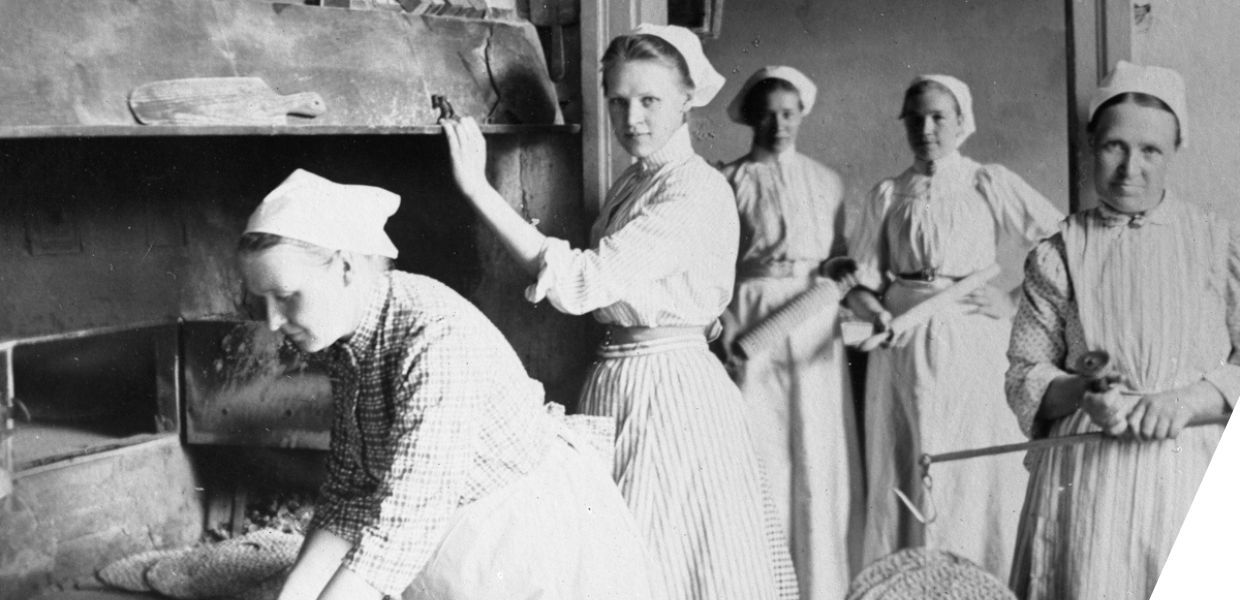2023 is the Europeana Initiative’s fifth year marking women's history month in March. While we dedicate this month to celebrating women's lives and their achievements, how can we ensure that women’s historical achievements are highlighted all-year-round through our cultural heritage? Below, expert colleagues from across the cultural heritage sector answer the question - what steps can cultural heritage institutions take to acknowledge, surface and highlight women’s history in their own collections?
‘Find those stories’ - Europeana Foundation
Europeana's approach to surfacing women's history has been led by telling stories - through online exhibitions, blogs, email courses and social media storytelling. Organisations can begin this process by looking at their collections and asking the question: where are the women and what are their stories? Women have made an impact around the world and in all areas, LGBTQ+, Disability Heritage, Black History Month, Environmental and so on. Find those stories and especially those that showcase the various intersectional identities of women so all women feel heard, seen and represented, and match them with a format that suits. Our 7 tips for digital storytelling are a good place to start. It might be overwhelming to know where to begin if you have not taken any steps yet but starting small is better than not starting at all!
Marijke Everts, Campaign Coordinator, Europeana Foundation
‘Look beyond the exhibitions’- The Women’s Museum, Norway
In Norway, the Women’s Museum, in collaboration with the Museum Network for Women’s History has produced a book and an online resource called Museum tools (currently only in Norwegian). These offer methods and examples of how to raise awareness of the lack of female representation in museum exhibitions and collections, including a set of tools to make it easier to include women’s history and culture in museum practices. Museum Tools is structured into three parts (test your museum, toolkit, and myth crushers) and offers a checklist so professionals working in cultural heritage institutions can easily check the gender (im)balance by counting the number of women and men, objects, texts and pictures, including how objects are placed in the museum space.
As we know, part of the problem with gender imbalance stems from the patriarchal museum structure that has given priority to artworks and objects that traditionally belong to the male sphere. So we need to look beyond the exhibitions to obtain gender balance. Gender equality is an administrative responsibility and management must work actively to ensure that gender balance is part of the museum’s strategic work. We also need to look at the practice of registering objects. Many objects have been made by or have belonged to a man, but perhaps used by a woman. Hence context and storytelling become important measures to give objects meaning.
For further information, reach out to post@annomuseum.no.
Hilde Herming, Curator and Museum Manager, The Women’s Museum, Norway
‘Research, preserve and restore’ - Women’s History Museum of Zambia
Women’s stories, experiences and incontestable displays of strength are often the very backbones of many societies. This sentiment rings true of the many Zambian women who built the foundations on which we stand. However, there is a dearth of documented knowledge and information in mainstream historical narratives of (Zambian) women from the perspective of Zambian women themselves.
Our work as the Women’s History Museum of Zambia is to research, preserve and restore Zambian indigenous knowledge and living histories focused on our women. This is achieved through the expansion and revision of cultural knowledge production and preservation through an array of projects which centre the agency of Zambian women in narrative construction. This means in our collections, Zambian women are not merely the research subjects but researchers and conduits of their own stories. There is a need for other cultural heritage institutions to employ similar methodologies, not just when it comes to the histories of women but the histories of any groups that have been excised out of the mainstream narratives which are being circulated and consumed.
Banji Chona, Project Manager, Women’s History Museum Zambia
'Without documentation, no history' - Atria, institute on gender equality and women's history
Too often, women, and especially women from marginalised groups (for example from the LGBTQI+ community, women with disabilities, women from the ‘lower class’, women of colour) remained underexposed in archives and collections all over the world. Rosa Manus, one of the founders of IAV in 1935 (now Atria) said, 'without documentation, no history'. It underlines why having a diverse and representative collection is so important. Our collections determine which parts of history we pass on. Many stories have been overlooked in the past. But it is important to give everyone a voice: cultural heritage institutions like Atria want everyone to be able to recognise themselves in our collections. That’s when it becomes interesting: when we use our objects and their stories to reflect on and start conversations about current topics, our collections really come to life.
Marianne Boere, librarian and Bettemiek Grijns, archivist, Atria
‘Previously hidden stories attract new audiences’ - Kvinnohistoriska
All objects have some type of connection or relation to women – they concern, touch or affect women in some way – but these stories are often more rare in museum collections and exhibitions.
Museum professionals need to stay curious and ask questions of their own collections and exhibitions. Can we give the audience a richer understanding of our history? What will future museum visitors understand about our society today? Whose voices will they find in our collections and archives? How can we enrich our collections with new perspectives connected to old or new objects?
To those who have colleagues who don't want to prioritise this work, maybe an extra incentive could be that the previously hidden history attracts new audiences! Our most visited events and exhibitions, and the collections of stories where most people contributed, are those that unfold the least visible voices from today, and from the past.
Anna Tascha Larsson, Director, Kvinnohistoriska


